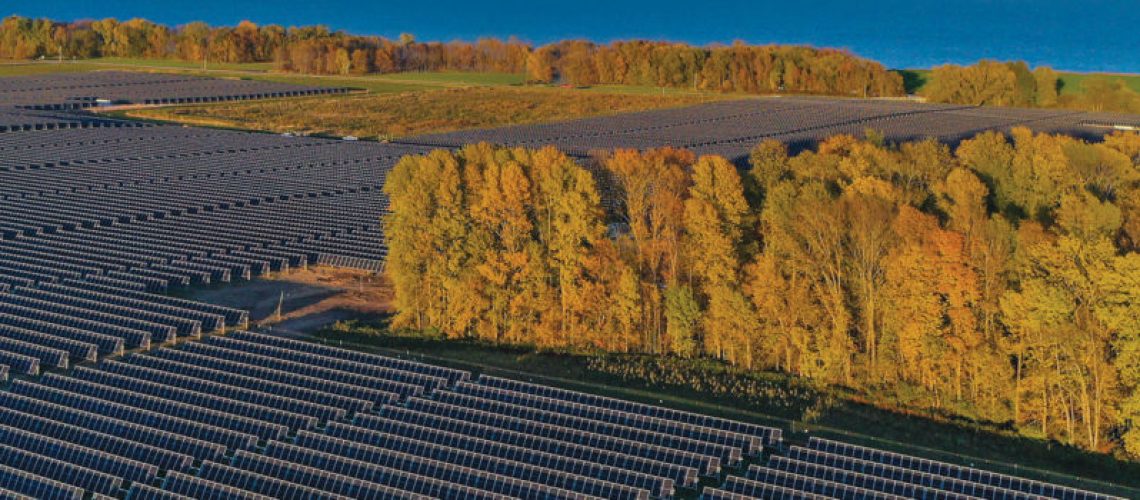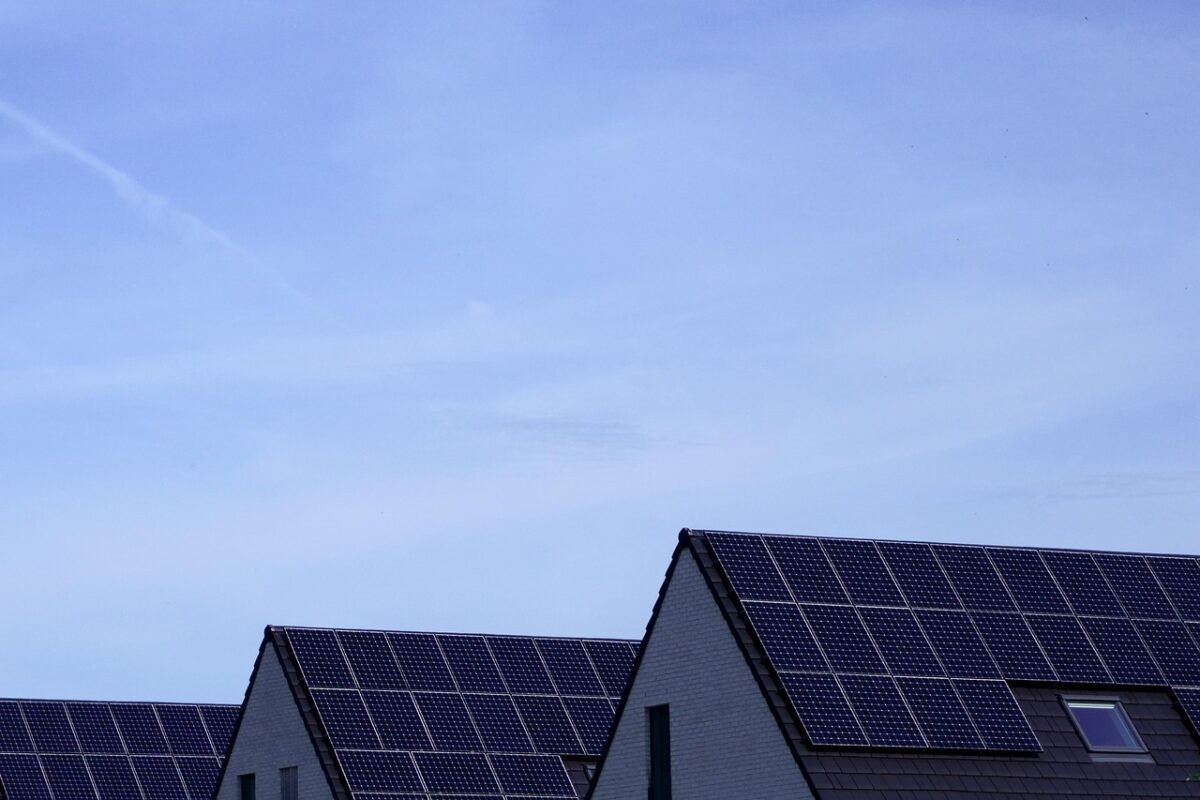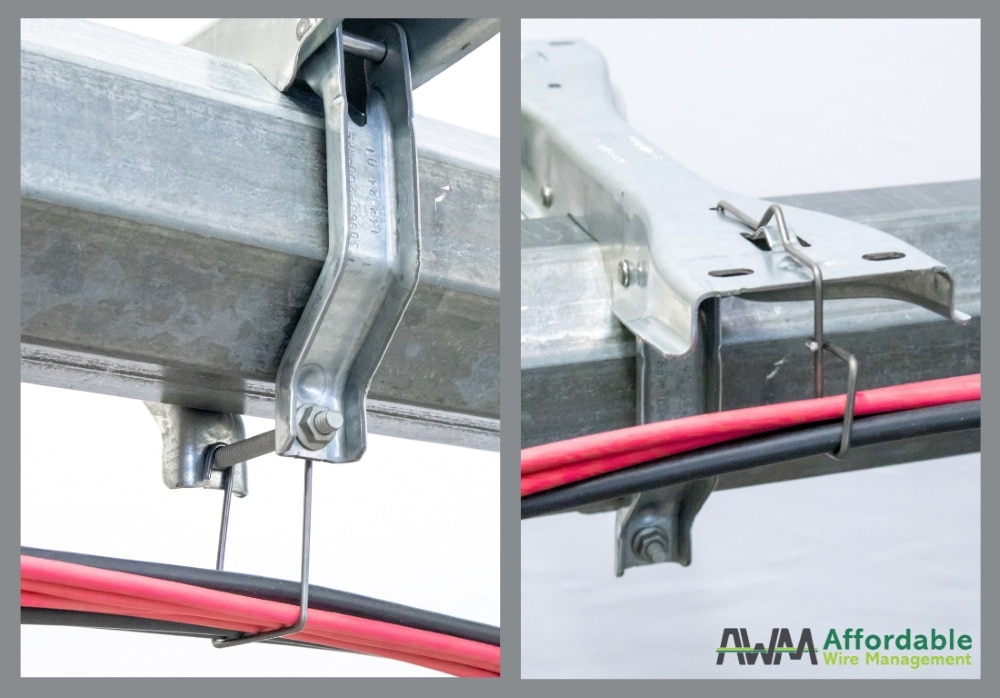Forward Analytics estimates that building 350 solar installations will grow Wisconsin’s economy by funding local businesses, stimulating the regional real estate market and increasing jobs.
According to Renew Wisconsin, 50% of Wisconsin households can’t access solar energy because they live in apartments, are renters or lack the appropriate roof. The Coalition for Community Solar Access (CCSA) wants to fill this resource gap. In 2022, they asked Forward Analytics to explore the economic benefits of investing in community solar infrastructure across the state.
Community solar allows lots of people to invest in and then share the energy generated from a solar array. These photovoltaic (PV) systems are often started by organizations or individuals with enough capital to fund construction. In some states, a shareholder’s excess electricity is fed back into the region’s utility grid in return for credits on their monthly utility bills. Otherwise known as net metering, these incentives make clean energy accessible to more people. Subscription rates are usually cheaper than utility company programs. In most cases, the users can sell back excess electricity at the rate they purchased it.
Forward Analytics estimates that building 350 solar installations will grow Wisconsin’s economy in three ways: funding local businesses, stimulating the regional real estate market and increasing jobs.
Researchers used CCSA data and National Renewable Energy Laboratory (NREL) intelligence to hypothesize the economic potential of such a project. The findings were run through the software platform IMPLAN’s program for a more accurate prediction of costs and revenue. The IMPLAN model measures the price of labor materials and land leases from a buyer’s and seller’s perspective. “The financial activity that occurs as these dollars move through the economy generates the multiplier effect,” the study reports.
The analysis estimates construction of 350 installations would take seven years. Assuming facilities would be built at a rate of 50 per year, Forward Analytics projects $1.57 billion will be generated during the building phase. The remaining $856.09 million and $67.03 million will be realized in the following 26 and six years respectively, due to operation and maintenance costs.
The bulk of economic growth during the construction period is due to high spending on materials and labor, “an average of 2,713 full-time equivalent jobs will be created or supported,” the study reports. However, the money local contractors or land renters make goes toward buying regional goods and services. “This cycle continues in smaller amounts, so the economic impact is much greater than the initial amount of spending.”
Calculations for proposed economic activity generated
Forward Analytics found that the construction of solar installations would stimulate the local economy through spending on regional labor and materials. Research estimates that building a 5 MW facility will cost about $9.8 million, $3.8 million of which will be spent in the state. That’s because materials like modules solar panels and inverters may be purchased elsewhere. Furthermore, a portion of developer profits will be realized domestically.
With regard to land leasing, facilities may rent land from local owners to build community PV systems. Forward Analytics estimates lease payments would generate income for landowners over 26 years (it accounts for construction time). Research suggests landowners could lease one 31 acre solar farm space for $4,216 annually. This value accounts for varying rental rates depending on land type and location, as well as overall fluctuations in the real estate market over the past three years.
Lastly, economic activity can be generated through the maintenance of community solar gardens. While these jobs will be less labor intensive than the construction ones, employees can still make an income that they spend to buy clothes electronics or cars across the state.
The community solar market was down across the country last year, but is expected to exceed 6 GW in 2023, according to a report by according to a report by Wood Mackenzie in conjunction with the CCSA. The report also points to a strong future, stating that in 2024 community solar is expected to begin on an upward path that will see it grow at an annual clip of 8% with nearly 14 GW of cumulative capacity installed by 2028.






